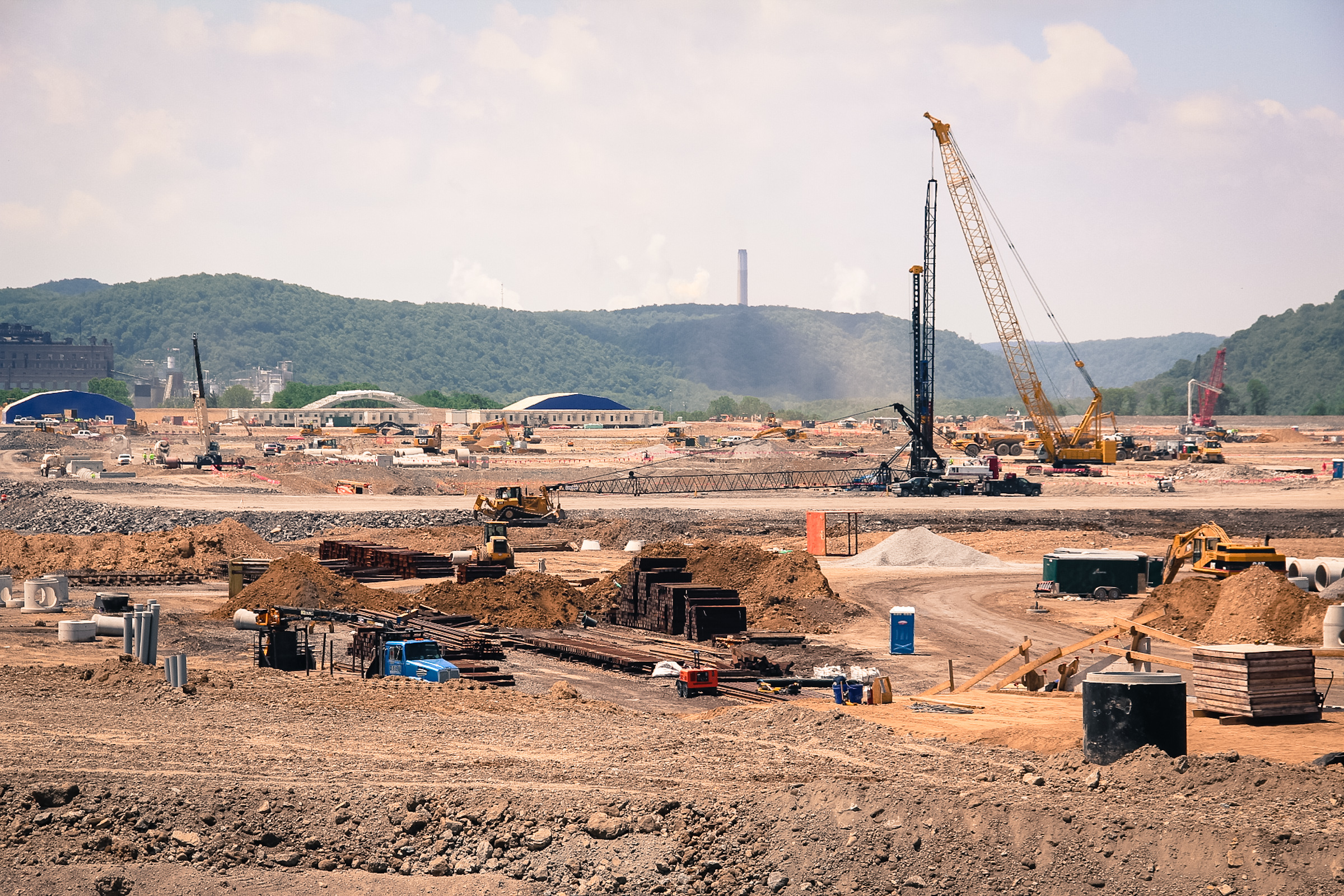Shell is building a new ethane cracker in Beaver County, but it’s asking the state to grant it a modification to an existing pollution discharge permit for the plant instead of issuing a new permit. That would mean Shell wouldn’t have to comply with stricter water pollution rules Pennsylvania put in place during the fracking boom.
When Shell bought the former Horsehead Zinc Smelter, in Monaca, Pennsylvania in 2015, the DEP allowed the company to obtain the smelter’s water discharge permit. With that permit, Shell was able to treat the tainted storm and groundwater on the site, which was polluted from decades of heavy industry.
LISTEN: The Debate Over Shell’s Water Permit
Now that Shell is planning to build its plant, which will make plastics out of the region’s natural gas, it wants to keep (or grandfather) the zinc smelter’s old permit, which dates from 2001 and allows it to discharge into the Ohio River and two small tributaries.
The problem with that, according to Lisa Hallowell of the Environmental Integrity Project, is that it would allow Shell to skirt a 2010 state regulation that tightened up industrial pollution discharges.
“If they’re going to allow them to get off the hook and not have to comply with these regulations, the whole reason for the regulation being put in place isn’t being carried out,” Hallowell says.
Those regulations put a cap on the concentration of total dissolved solids (TDS) in a facility’s waste stream. TDS is a broad group of constituents that includes naturally occurring salts, metals, and minerals that can end up in mine water and industrial wastewater.
At the time the 2010 regulation was enacted, TDS rates in some western Pennsylvania rivers were spiking, and the DEP suspected fracking wastewater that was being sent to sewage treatment plants. Officials had to restrict drinking water supplies, and industrial facilities had problems with their equipment.
The new limit for TDS in wastewater is 2,000 mg/L. Shell’s draft permit application says the plant’s “estimated TDS discharge concentrations” will range from 4,690 mg/L to 7,375 mg/L.
“DEP put this new requirement in the regulations that new dischargers would have to limit their TDS in order to protect health and environment,” Hallowell says. “This is a new facility that should be held to the higher standard all facilities are held to.”
Shell declined comment but previously called the permit request “both appropriate and consistent with how Pennsylvania manages regulations associated with new development at existing industrial sites.” The total amount of TDS dispersed from the new plant would still be lower than what the zinc smelter discharged, according to the draft permit.
The EPA regulates TDS because it can affect the taste, color and odor of drinking water. At high enough concentrations, it can also be toxic. Paul Ziemkiewicz of West Virginia University’s Water Research Institute says because of the Ohio River’s high water volume and flow, Shell’s proposed TDS discharge wouldn’t affect water quality in the river all that much. The EPA’s maximum contaminant level for TDS in rivers is 500 mg/L. Ziemkiewicz says the Shell plant would raise the Ohio River’s TDS concentration only slightly — from 176.5 to 177.39 mg/L, which is still well under the EPA’s limit.
“I’d be really shocked if you came back after five or six years and saw a spike where those discharges began,” Ziemkiewicz says. “You’d barely notice the difference.”
He says TDS in discharge from plants like Shell’s ethane cracker typically come from cooling tower water. Over time, the water evaporates and the concentration of naturally occurring salts increases.
“It’s basically river water that’s been drawn in and concentrated through that cooling tower. Basically what you’re getting is river water, minus a lot of the water.”
The Environmental Integrity Project’s Lisa Hallowell says the problem isn’t that Shell’s plant would put the Ohio River over the TDS limit. She says it would set a bad precedent.
“The idea is as new discharges are coming on, we want to make sure that they’re not making the problem any worse,” she says. “We don’t want to just say they can discharge until the point that this is a problem. We want to go in the opposite direction.”
A DEP spokesperson declined to comment on the permit but said that the EPA had reviewed it and “determined that the applicable requirements were met.” An EPA spokesperson couldn’t be reached.
The DEP is expected to take months before deciding on the permit request.



